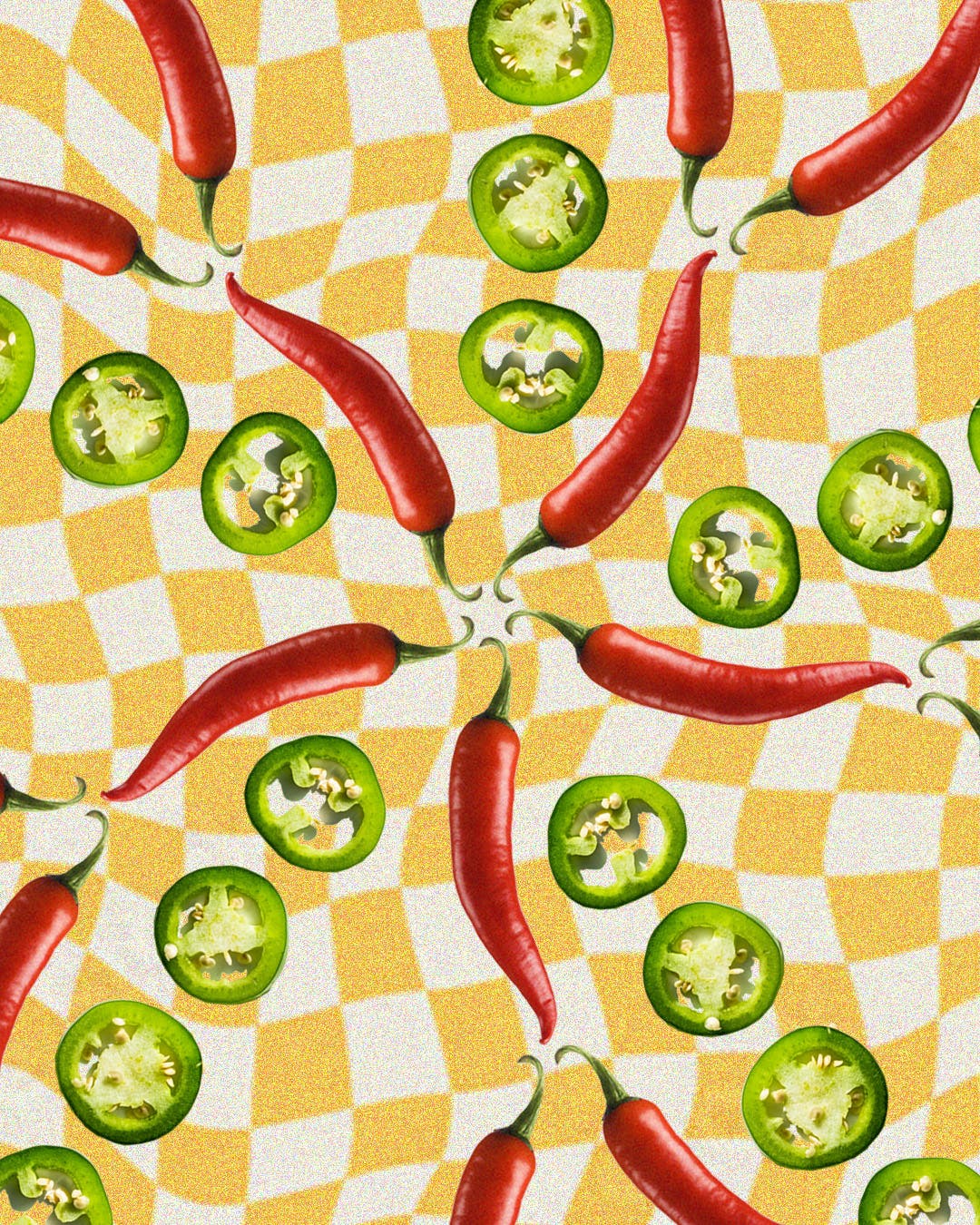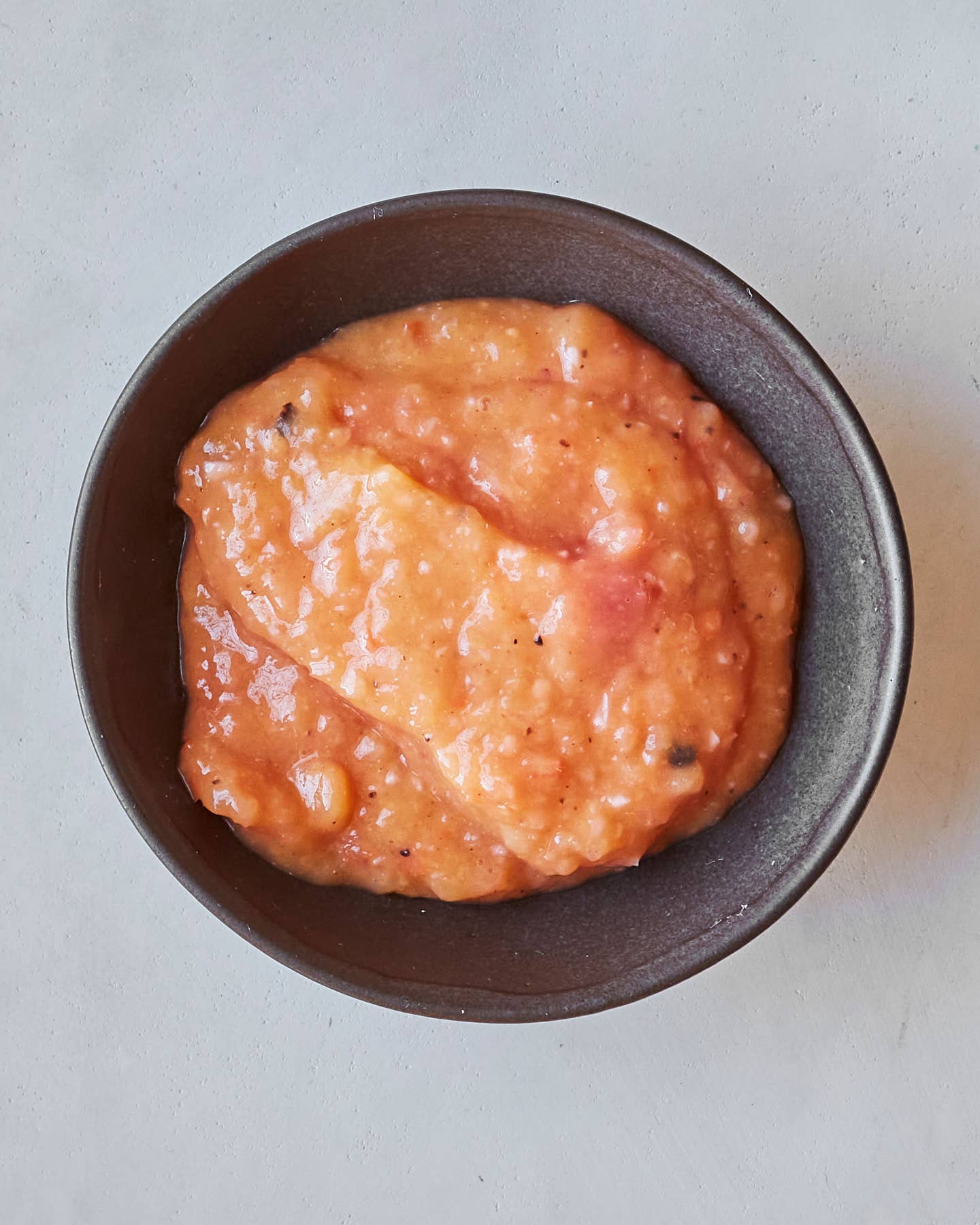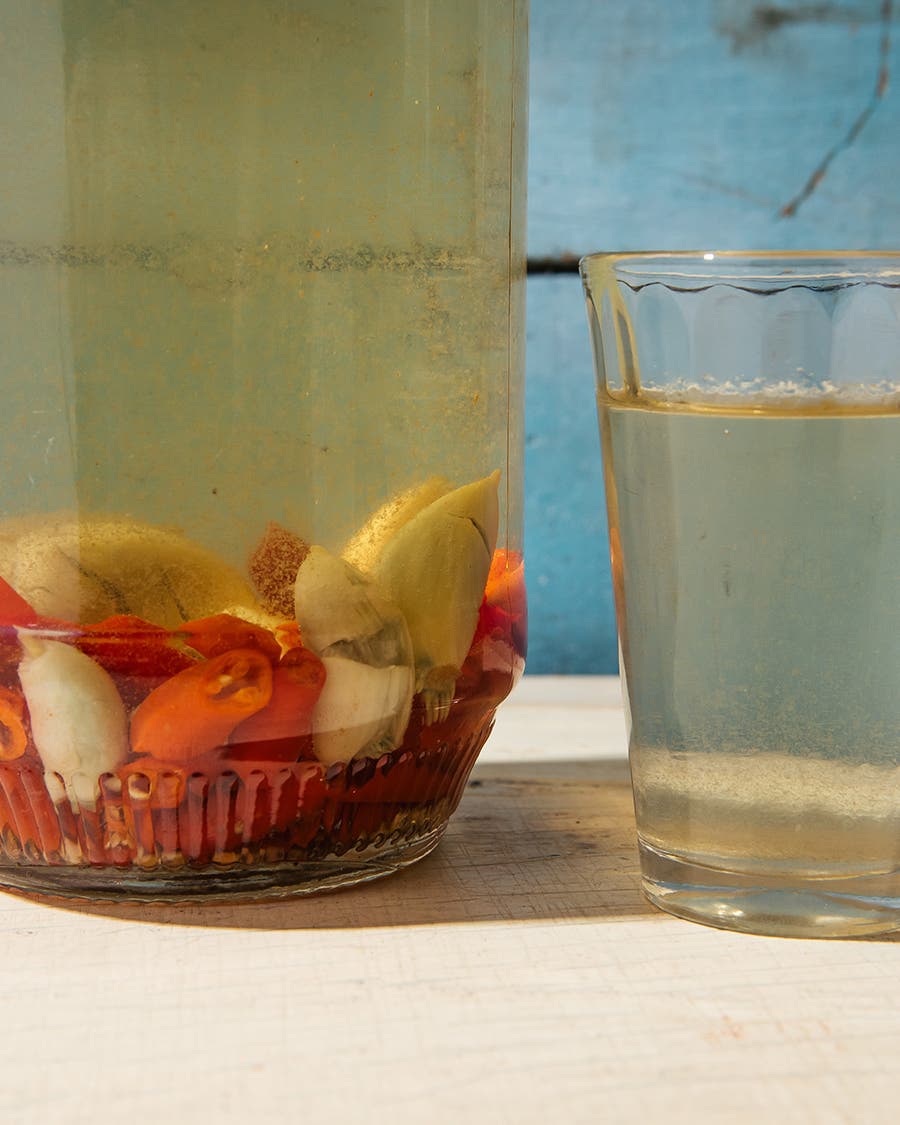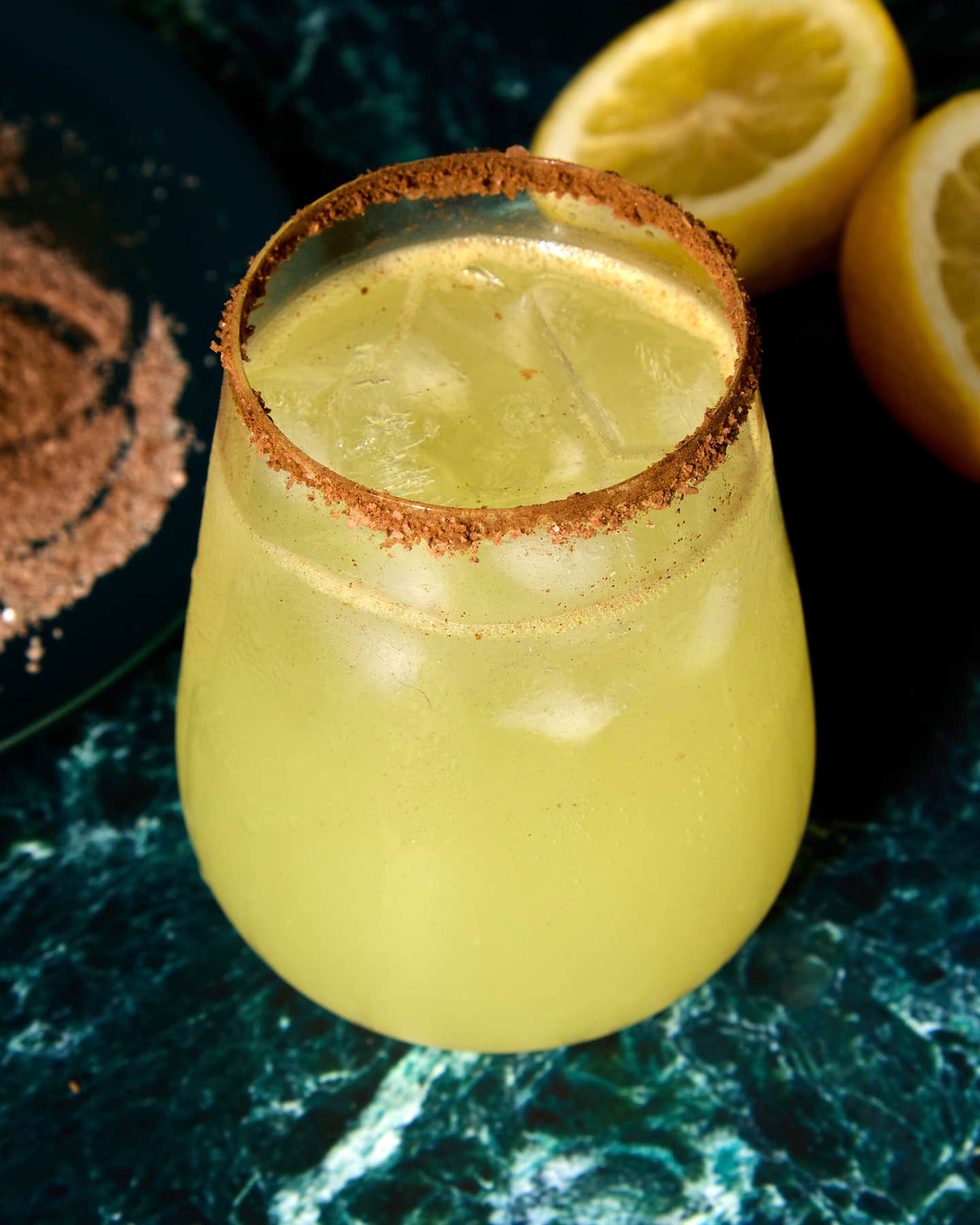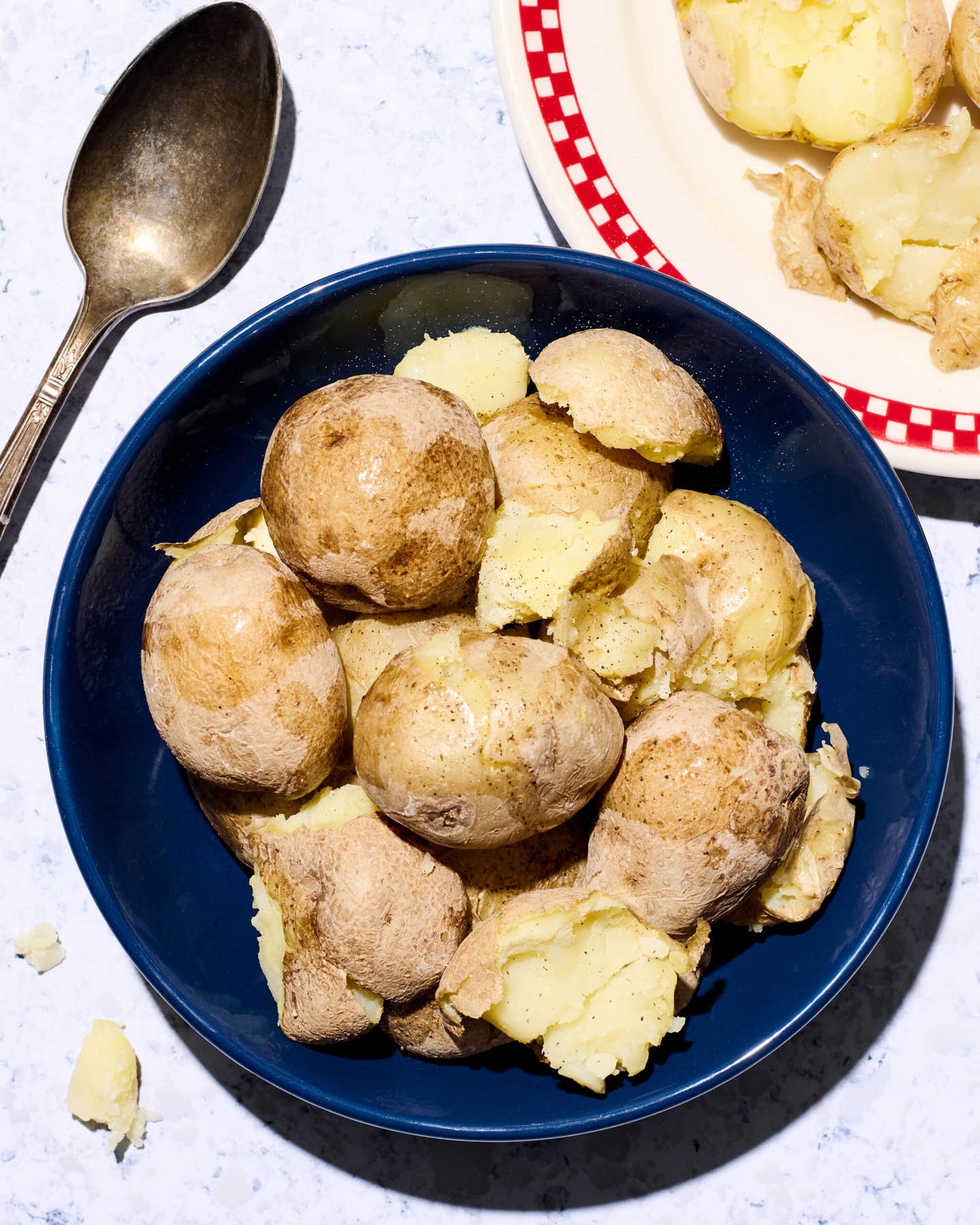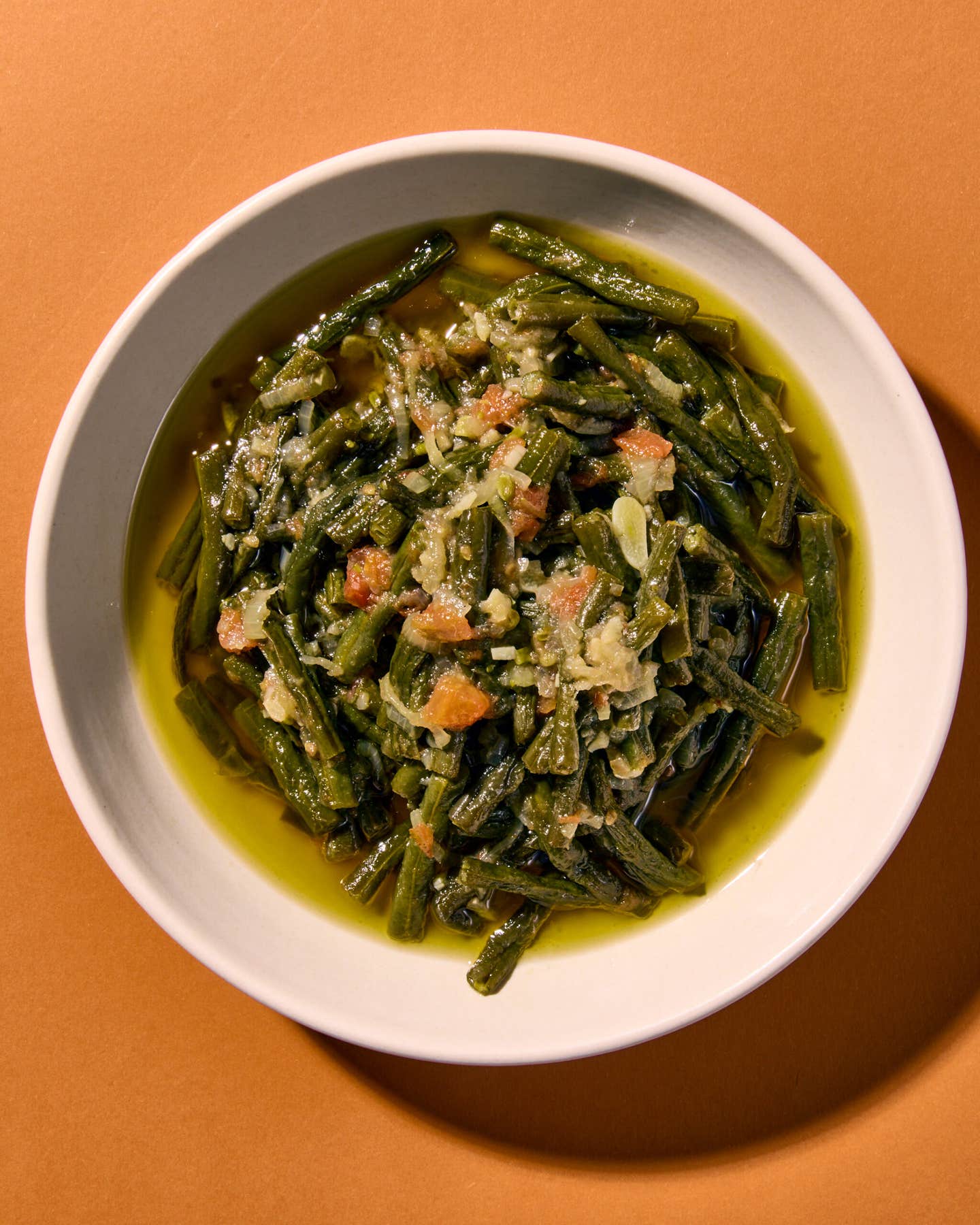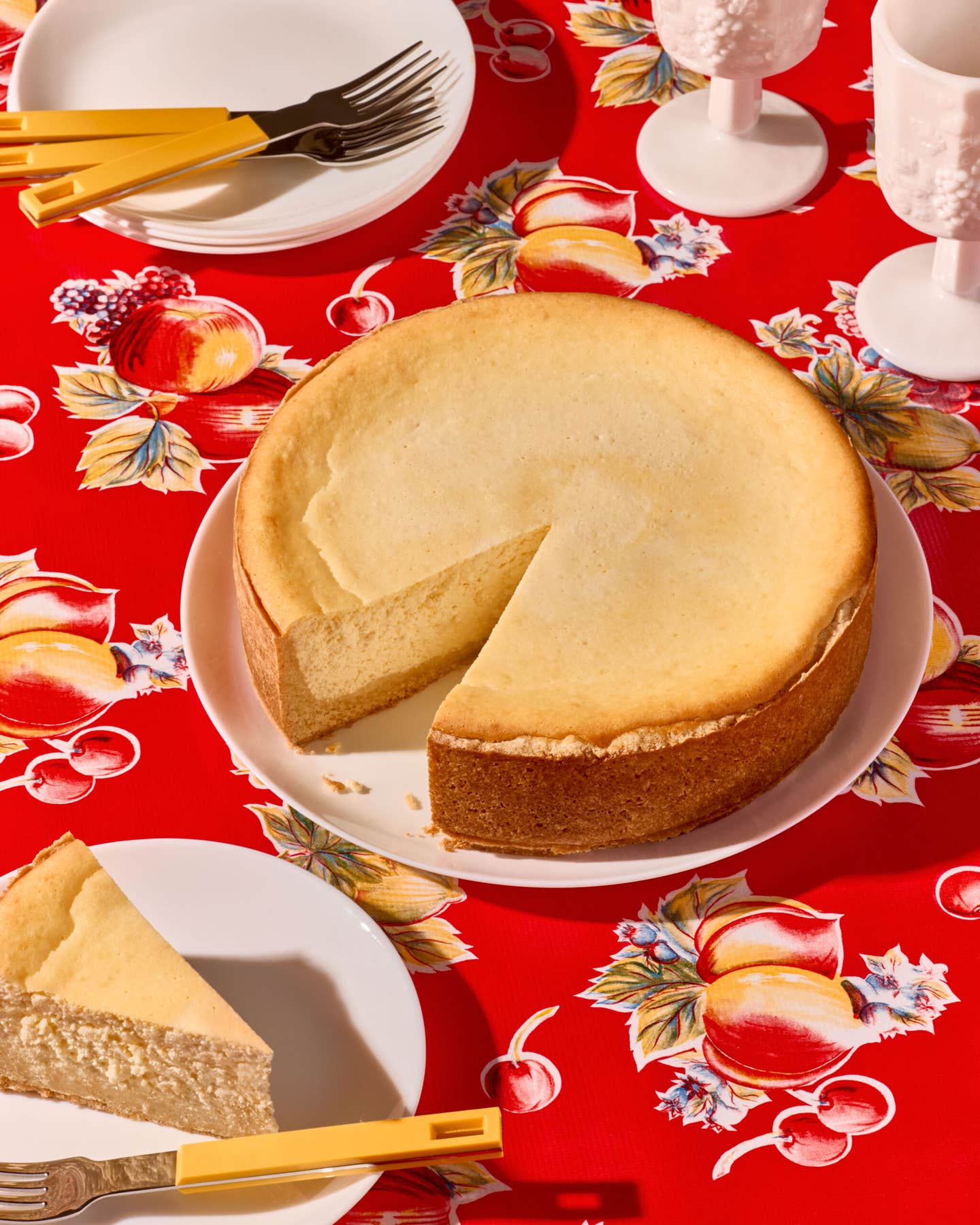Lacto-Fermented Hot Sauce
Balanced by sweet carrots and zesty garlic, this fiery condiment is summer in a bottle.
- Makes
About 2 cups
- Time
30 minutes, plus fermenting time
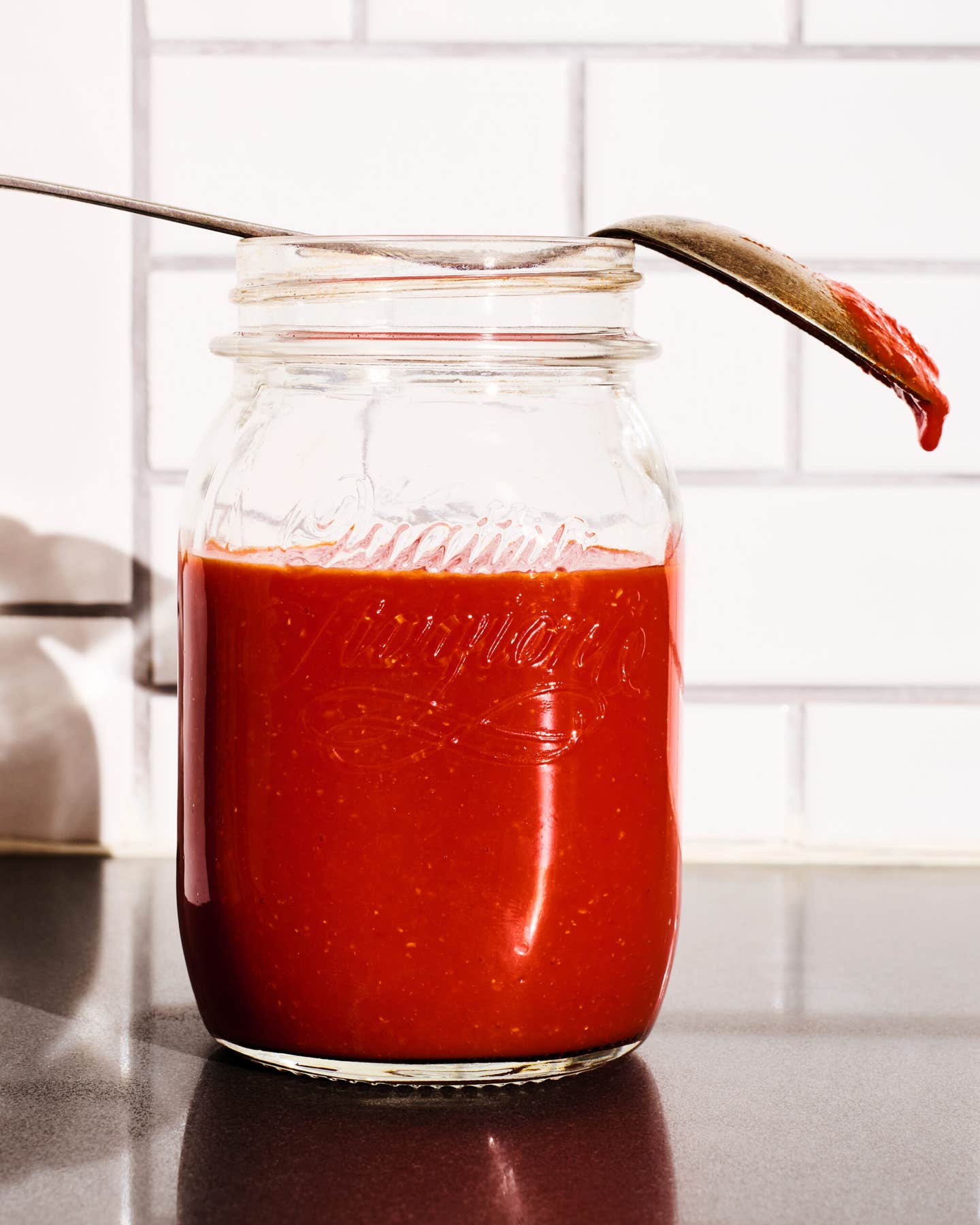
Lacto-fermentation is a simple process that utilizes a salt brine to cultivate Lactobacillus bacteria, preserving foods and transforming their texture and flavor. In a sufficiently salty environment (which is measured by weight at 2 percent of the mixture to be fermented), harmful bacteria can’t survive, allowing the Lactobacillus to produce the natural preservative lactic acid, which can help keep fermented vegetables safe to eat in the fridge for months. It’s important to note this is not the same as canning, which can create shelf-stable preserves—lacto-fermented produce is meant to be kept refrigerated and should be monitored periodically for mold growth or off smells. Still, sterilization can help keep bad bacteria out, and you can easily sterilize your fermentation jars and lids upside-down on a baking sheet in the oven at 250°F for 20 minutes. Fermentation works best at room temperature, preferably out of direct sunlight.
In this recipe, a variety of hot peppers (I used a mix of Hungarian hot peppers, Thai chiles, and habanadas, a unique breed of habanero with zero spice level) are sliced and fermented alongside carrot, garlic, and shallot before being blended into a smooth hot sauce. The carrots provide a subtle sweetness to balance the heat, and the garlic and shallot provide some aromatic oomph. If you’d like a milder hot sauce, you can remove the chile seeds before fermenting. Apple cider vinegar is an optional addition at the end if you like a more tangy hot sauce.
Ingredients
- 1½ lb. assorted hot peppers, stems removed, thinly sliced
- 4 garlic cloves, smashed and peeled
- 1 small carrot, coarsely shredded
- 1 medium shallot, thinly sliced
- Kosher salt
- Apple cider vinegar (optional)
Instructions
Step 1
Step 2
Step 3
Step 4
- To a large bowl set over a tared kitchen scale, add the peppers, garlic, carrot, and shallot. Take the weight measurement and multiply by 0.02. In a small bowl, measure the salt to this weight and add to the bowl with the pepper mixture. Using gloved hands, massage the salt into the pepper mixture until it starts to release its juices, 2–3 minutes.
- To a sterilized 1-liter or larger glass jar, add the pepper mixture, using gloved hands to compact it as you go. Using a fermentation weight, a zip-top plastic bag filled with water, or a small nonreactive plate, jar lid, or bowl, press the pepper mixture down until it is below the level of the liquid. If there is not enough liquid, dissolve 1 tablespoon salt into 1 cup lukewarm water, then slowly add the solution to the jar until the pepper mixture is just covered.
- Cover the jar with the lid or multiple layers of cheesecloth secured with a rubber band and set aside at room temperature and out of direct sunlight to ferment until the liquid is very bubbly and the peppers are tangy, 3–5 days. If using a sealed lid, open the jar once daily to release any gasses.
- Once fermented, strain the contents of the jar, reserving the liquid. Transfer the pepper mixture to a blender and pulse until smooth, adding a tablespoon of the brine at a time as necessary to loosen, and to reach the desired consistency. (Adding more brine will result in more salt, so keep this in mind for flavor.) Season to taste with apple cider vinegar, if desired, and pulse once more. Transfer to a sterilized glass jar or bottle and store in the fridge for up to 1 year.
Keep Reading
Continue to Next Story
